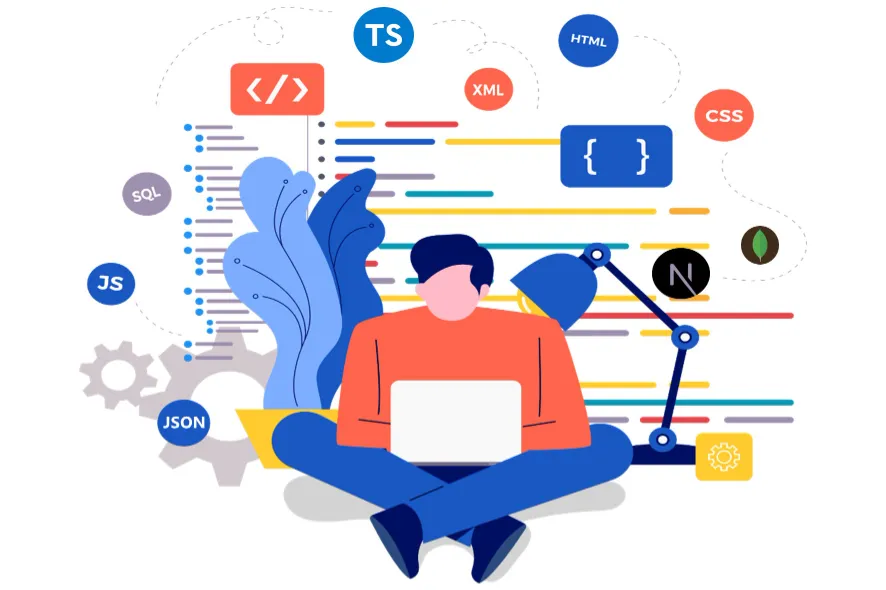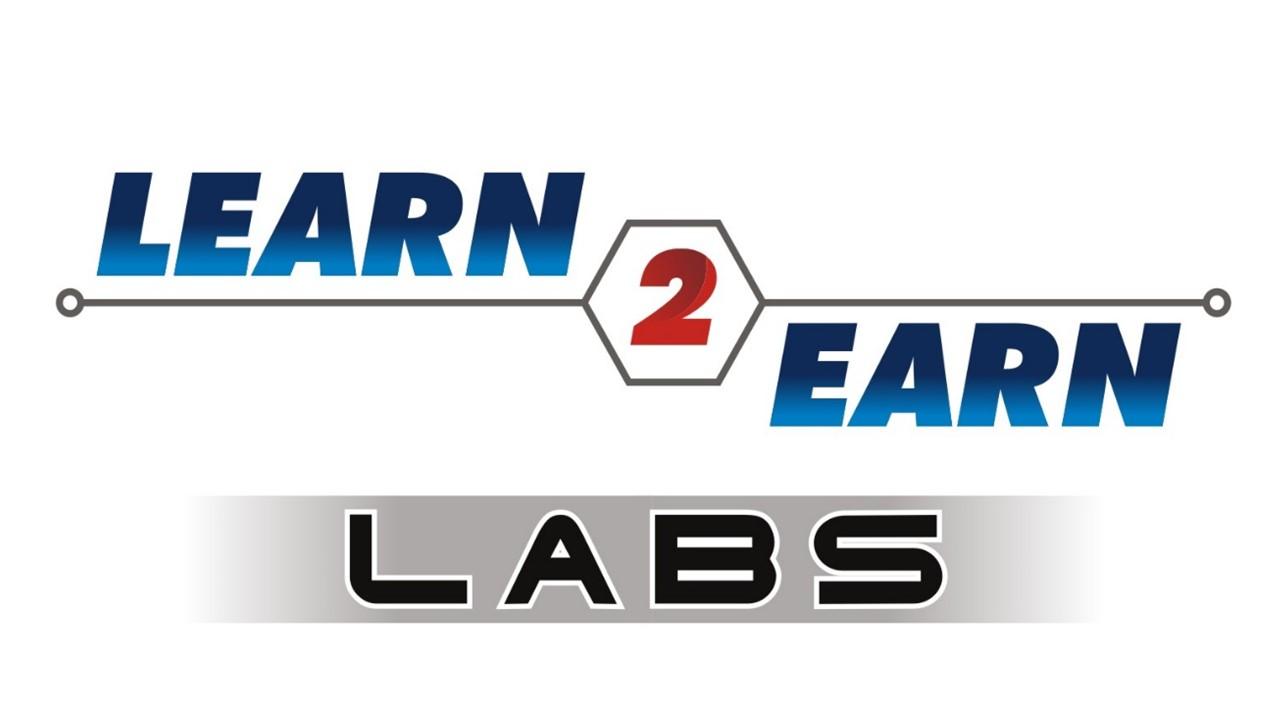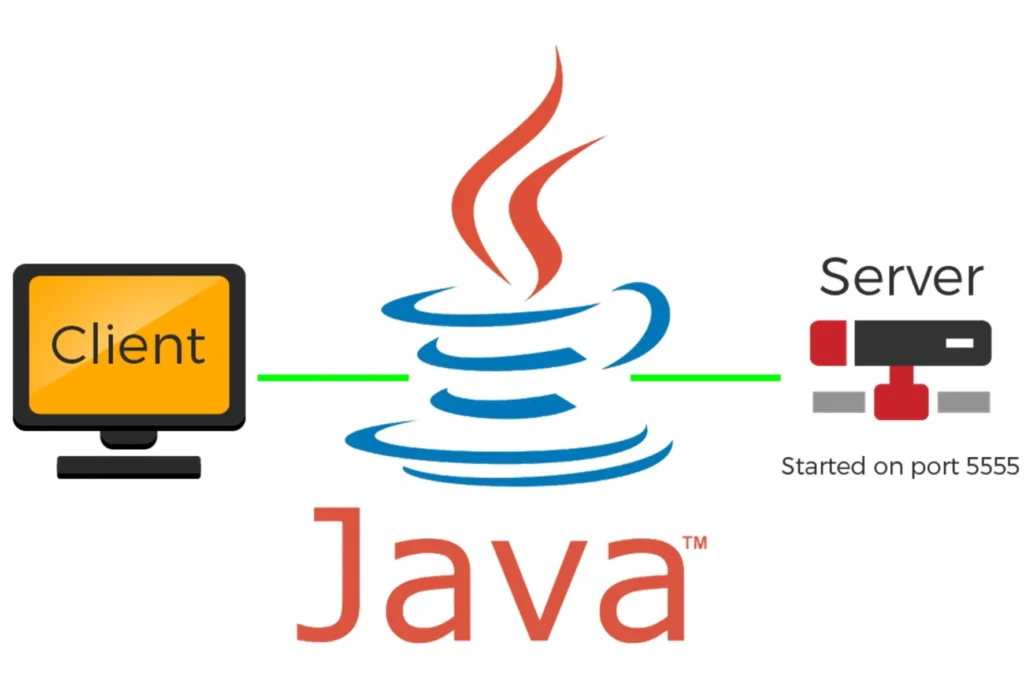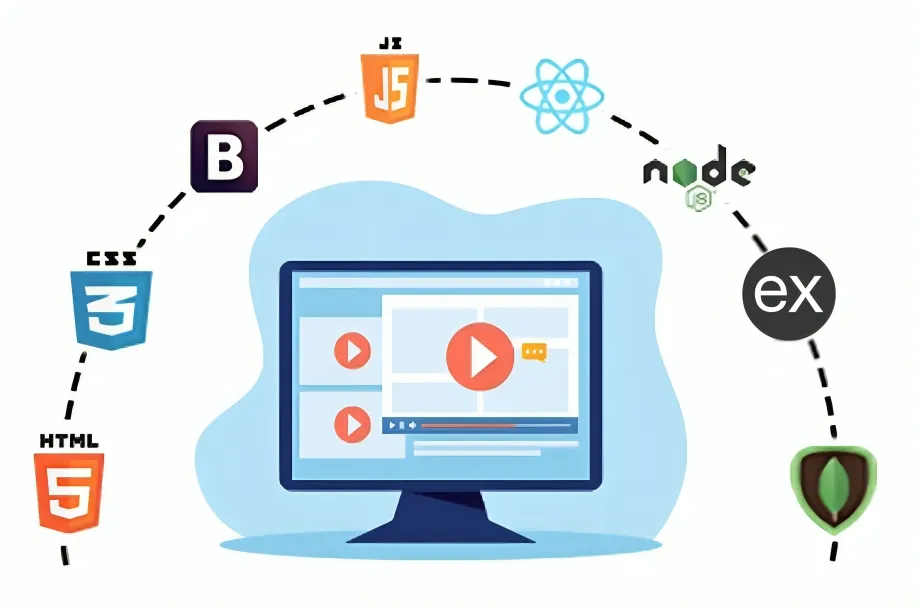
Become a Proficient
Full Stack Engineer with MERN Stack
With Project Experience
The Full Stack Engineer Using MERN Stack training program is a comprehensive 18-month course designed to equip learners with the skills required to become proficient full-stack engineers. This program covers all aspects of web and software development, including design research, front-end operations, back-end development, database management, cloud computing, and DevOps operations.
With a strong emphasis on practical implementation, this training program provides hands-on experience in developing and deploying full-fledged applications. Learners will also explore real-world case studies and best practices followed in the industry, ensuring they are job-ready upon completion.
About the Program
This program is designed to provide a deep and structured learning experience covering the entire spectrum of full-stack engineering. It includes hands-on coding, real-world projects, design thinking, system architecture, CI/CD pipelines, cloud computing, and application deployment. By the end of the program, learners will be able to develop, deploy, and maintain high-performance web applications.
This program also incorporates lots of project work & practical assignments, ensuring you gain practical experience. By the end of the course, you will have built a robust portfolio that showcases your expertise and demonstrates your readiness for the professional world. Each module is tailored to industry standards, helping you meet the expectations of top employers worldwide.

Who is a Full Stack Developer?
A Full Stack Developer is a highly skilled professional proficient in both front-end (client-side) and back-end (server-side) development. They design intuitive user interfaces, manage databases, implement server logic, and deploy applications to production. As the foundation of modern web development, Full Stack Developers play a crucial role in building seamless and efficient digital experiences, making them one of the most in-demand experts in the tech industry.
The MERN Stack’s powerful combination of MongoDB, Express.js, React, and Node.js offers unmatched versatility, scalability, and efficiency, making it the perfect choice for mastering full stack web development. This comprehensive stack ensures you are well-prepared to tackle real-world challenges in building modern, dynamic, and high-performance web applications, meeting the demands of the ever-evolving tech industry.
Who Can Join
This program is designed for individuals who are passionate about mastering both development and deployment aspects of web applications. Whether you are a beginner or an experienced developer looking to expand your expertise, this course provides the necessary skills to excel in full-stack engineering.
This program is ideal for:
- Aspiring developers who want to build a career in full-stack engineering.
- Front-end or back-end developers who wish to become proficient in both domains.
- Software engineers looking to enhance their DevOps and cloud skills.
- IT professionals who want to upskill with modern web development and deployment strategies.
- Students and professionals seeking structured guidance on MERN stack development and cloud computing.
What makes this Program Unique?
This program bridges the gap between traditional development and modern cloud-native engineering, ensuring learners gain expertise in full-stack development along with DevOps integration.

- Comprehensive Learning: Covers front-end, back-end, database management, cloud computing, and DevOps.
- Hands-on Projects: Practical exposure to real-world applications, system architecture, and deployment strategies.
- Industry-Relevant Skills: Learn cutting-edge technologies such as React, Node.js, Express.js, MongoDB, Docker, Kubernetes, AWS, and CI/CD pipelines.
- Structured Roadmap: A step-by-step approach covering fundamental to advanced topics.
- Capstone Project: Work on a full-fledged web application that includes UI/UX design, API integration, security, and cloud deployment.
The demand for Full Stack Engineers is continuously growing as companies seek professionals who can handle both development and deployment. By completing this program, learners will be equipped to work with startups, product-based companies, and enterprise-level organizations that require scalable and cloud-native applications.
Advantages of the Program
- Real-world Implementation: Learn to develop production-ready applications.
- Cloud & DevOps Exposure: Master cloud deployment, Kubernetes, CI/CD pipelines, and automation.
- Industry Best Practices: Learn clean coding, scalable architecture, and security best practices.
- Job-Oriented Training: Aligned with industry demands and job market expectations.
- Mentorship & Community Support: Engage with expert mentors and peers throughout the program
Career Options After Completion
The Full Stack Engineer Using MERN Stack program prepares learners for a wide range of job roles across multiple industries. The demand for full-stack engineers has grown significantly as companies seek professionals who can develop, deploy, and manage scalable applications. With expertise in front-end, back-end, DevOps, and cloud technologies, learners will have opportunities in both startups and established enterprises.
Upon successful completion of the program, learners will be qualified for various career opportunities, including:
- Full Stack Engineer
- MERN Stack Developer
- Cloud Engineer
- DevOps Engineer
- Software Engineer
- Front-end/Back-end Developer
- System Architect
- Technical Lead
How Much Dedication is Required?
To succeed in this program, learners should dedicate 20-25 hours per week to lectures, hands-on coding, assignments, and project work. Consistency and practice are key to mastering full-stack engineering.
This program follows an intensive learning schedule that requires a disciplined approach. Learners should actively participate in coding exercises, attend live sessions, and work on real-world projects. Regular assessments and milestone projects will ensure steady progress.
Staying updated with emerging trends and technologies in full-stack engineering will further strengthen the learning process and improve job readiness. By committing to this structured plan, learners can maximize their growth and confidently step into the role of a Full Stack Engineer.

Work Experience to Boost Your Career
By the end of this program, learners will have built multiple projects, including a capstone project that demonstrates their ability to design, develop, and deploy applications. Additionally, learners will work on real-world case studies, participate in collaborative projects, and contribute to open-source repositories, further strengthening their technical expertise. Exposure to Agile methodologies and industry-standard DevOps practices will ensure that graduates are well-prepared for professional roles. These practical experiences will enhance problem-solving abilities and boost employability in competitive job markets.
Transform Your Career Today
This Full Stack Engineer Using MERN Stack program is designed to provide learners with the expertise required to build scalable, secure, and high-performance applications. The structured learning path ensures that every aspect of development, from UI/UX design to cloud deployment, is covered comprehensively.
Your Journey to Success Starts Here!
If you aspire to become a Full Stack Engineer, this 18-month program is the perfect step towards mastering the MERN stack, cloud computing, and DevOps operations. Join us and transform your career in software engineering!
Training Mode
Online Live Classes are also available
- 4x more effective way of learning
- Hands-on experience with projects & assignments
- Virtual class with real interaction with trainer
- Monitoring support & troubleshooting issues
- Masterclass from industry experts & leaders
- Live class recordings for revision purposes
Full Stack Web Development using MERN Training Program in Agra
Learn2Earn Labs
F-4, First Floor, Anna Ikon Complex, In Front of Deviram Food Circle, Sikandra-Bodla Road, Sikandra, Agra, Uttar Pradesh – 282007
Call: +91-9548868337
Program Details
Feel free to call
Request More Information
In the Full Stack Web Development Training Program (MERN Stack), you will explore in-depth course modules covering essential modern web development techniques. This program equips you with the skills needed to build dynamic, scalable, and high-performance web applications, ensuring a strong foundation for a successful development career.
Introduction to HTML & History, HTML Elements and Attributes, Semantic HTML & Importance, HTML Forms and Form Elements, Input Types and Form Validation, HTML Tables and Structuring Data, HTML5 Elements (Audio, Video, Canvas, SVG), HTML Meta Tags and SEO Basics, Creating Multi-page Websites, Links and Navigation Menus, HTML5 Storage (LocalStorage, SessionStorage), HTML Accessibility Features (ARIA), Using HTML for Email Templates, HTML Best Practices and Code Formatting, HTML Performance Optimization, HTML Boilerplate and Frameworks Overview, Introduction to PWA (Progressive Web Apps), HTML with JavaScript Integration, Hands-on Practice and Assignments.
Introduction to CSS & CSS Syntax, Selectors, Specificity & Inheritance, Box Model and Positioning Techniques, Float, Clear and Overflow Properties, CSS Flexbox and Grid Layouts, Media Queries and Responsive Design, CSS Variables and Custom Properties, CSS Animations and Transitions, Pseudo-elements and Pseudo-classes, CSS Units (px, %, em, rem, vh, vw), Backgrounds, Borders, and Shadows, Text Styling and Typography Best Practices, CSS3 New Features and Properties, Implementing Dark and Light Modes, CSS Preprocessors (SASS, LESS – Introduction), Using Google Fonts and Custom Fonts, CSS Frameworks (Bootstrap, Tailwind – Overview), Debugging CSS Issues, Performance Optimization in CSS, Hands-on Practice and Mini Projects.
Introduction to SASS & Its Advantages, Installing SASS and Setting Up Environment, Variables and Data Types in SASS, Nesting and Parent Selectors, Mixins and Functions in SASS, Partials and Importing SASS Files, SASS Maps and Loops, Conditionals and Control Structures, Using Extend and Inheritance, CSS Grid and Flexbox with SASS, Organizing Large-Scale Projects with SASS, SASS with Media Queries, Precompiling and Minifying SASS, Vendor Prefixing and Compatibility Issues, Theming with SASS Variables, Integrating SASS with Frontend Frameworks, Error Handling and Debugging in SASS, Performance Optimization in SASS, Building Reusable Components with SASS, Hands-on Practice and Assignments.
Introduction to JavaScript, Variables (var, let, const) and Data Types, Operators and Expressions in JavaScript, Control Flow (if-else, switch-case), Loops (for, while, do-while), Functions (Named, Anonymous, Arrow Functions), Function Scope and Closures, JavaScript Objects and Prototypes, Arrays and Array Methods, String Manipulation and Regular Expressions, Events and Event Listeners, DOM Manipulation and Traversal, Forms Handling and Validation, Error Handling (try-catch, finally), JavaScript Timers (setTimeout, setInterval), JavaScript ES6+ Features (Destructuring, Spread, Rest), JavaScript Best Practices and Coding Standards, Hands-on Practice and Assignments.
ES6 Introduction and History, Template Literals and String Interpolation, Arrow Functions and Lexical Scope, Destructuring Objects and Arrays, Spread and Rest Operators, Default Parameters in Functions, Modules and Import/Export Statements, Classes and Object-Oriented Programming in JavaScript, Promises and Async/Await, Iterators and Generators, Sets, Maps, WeakSets, and WeakMaps, Higher-Order Functions and Functional Programming, JavaScript Proxies and Reflect API, JavaScript Symbols and Iterators, Optional Chaining and Nullish Coalescing Operator, Event Delegation and Bubbling, Performance Optimization Techniques in JavaScript, Hands-on Practice and Mini Projects.
Introduction to Asynchronous JavaScript, Callbacks and Callback Hell, Understanding Promises in JavaScript, Promise Chaining and Error Handling, Async/Await Syntax and Best Practices, JavaScript Event Loop and Concurrency Model, Introduction to Observables (Basic Overview), Working with JSON Data, Parsing and Stringifying JSON, Fetch API for HTTP Requests, Axios for Making API Calls, Handling API Errors and Responses, JavaScript HTTP Methods (GET, POST, PUT, DELETE), API Authentication and Headers, Working with Third-Party APIs, Real-world API Integration Examples, Hands-on Practice and Assignments.
Introduction to Fetch API, Fetching Data from External APIs, Handling Response and Errors in Fetch, Understanding Headers and Status Codes, Introduction to Axios and Why It’s Useful, Performing GET, POST, PUT, DELETE Requests with Axios, Configuring Axios Defaults, Handling API Interceptors, Caching and Performance Optimization with Axios, Handling Timeouts and Retrying Failed Requests, Fetch vs. Axios – When to Use What?, Introduction to Working with Authentication Tokens (JWT, OAuth), Parsing and Handling JSON Responses, Using Async/Await with Fetch and Axios, Debugging API Calls in JavaScript, Handling API Throttling and Rate Limits, Optimizing Network Requests with Fetch/Axios, Hands-on Practice and API Integration.
Introduction to Version Control, Installing and Configuring Git, Git Basics: Init, Clone, Commit, Push, Pull; Understanding Branching and Merging, Handling Merge Conflicts, Using GitHub for Code Collaboration, Working with Remote Repositories, Creating and Managing Pull Requests, Git Rebase and Stashing, Using .gitignore and Managing Large Files, Git Tags and Releases, Working with Forks and Upstream Repositories, Git Workflows (Feature Branching, GitFlow), GitHub Actions and CI/CD Basics, Introduction to GitHub Pages, Repository Security and Access Control, Debugging and Troubleshooting Git Issues, Working with Git Hooks, Managing Large Codebases with Git, Using Submodules in Git, Configuring SSH for GitHub, Setting Up a GitHub Project, Managing Multiple Remotes, Git Bisect for Debugging, Hands-on Practice and Assignments.
Introduction to React and Virtual DOM, Creating and Using Components, Props and State in React, Handling Events in React, Forms and Controlled Components, React Lifecycle Methods, Conditional Rendering and Lists, React Router for Navigation, Higher-Order Components (HOC), React Context API for State Management, Working with APIs in React (Fetching Data), Error Handling in React Applications, React Hooks (useState, useEffect, useContext, useRef, useReducer, etc.), Custom Hooks in React, Performance Optimization in React, Lazy Loading and Code Splitting, React Testing Basics with Jest, Deploying React Apps, Server-side Rendering (SSR) Basics, Styling in React (CSS Modules, Styled Components), State Management Techniques, Working with Controlled & Uncontrolled Components, Handling Side Effects in React, Hands-on Practice and Projects.
Introduction to State Management, Understanding Redux Architecture, Setting Up Redux Store, Actions, Reducers, and Dispatching Actions, Middleware in Redux (Thunk, Saga Overview), Introduction to Redux Toolkit (RTK), Using Slices in Redux Toolkit, Async Data Fetching with RTK Query, Connecting Redux with React Components, Debugging Redux Applications, Performance Optimization with Redux, Advanced State Normalization Techniques, Best Practices and Code Organization, Handling Nested State Updates, Using Redux DevTools for Debugging, Working with Asynchronous Data in Redux, Redux with TypeScript, Hands-on Practice and Assignments.
Introduction to React Query, Query Caching and Data Fetching, Query Keys and Refetching Strategies, Mutations and Handling API Updates, Handling Query Errors and Retrying Requests, Infinite Queries for Pagination, Optimistic Updates and Query Invalidation, Prefetching and Background Fetching, State Synchronization and Performance Optimization, Using React Query with GraphQL, Debugging React Query Applications, React Query vs. Redux Toolkit Query, Data Synchronization Between Server and Client, Handling Real-time Updates with WebSockets and React Query, Query Suspense & Error Boundaries, Hands-on Practice and Assignments.
Introduction to TypeScript, Static Typing and Type Safety, Type Annotations and Type Inference, Interfaces and Type Aliases, Working with Generics, TypeScript with React, Using TypeScript with APIs, Debugging and Error Handling in TypeScript, Best Practices in TypeScript, TypeScript and JavaScript Interoperability, Working with TypeScript Decorators, Handling Complex Data Structures in TypeScript, Configuring TypeScript for Large Projects, Type Assertion and Type Guards, Enum and Tuple Usage, Setting Up a TypeScript Project, TypeScript Compiler Configuration (tsconfig.json), Unit Testing with TypeScript, Hands-on Practice and Assignments.
Introduction to Next.js Framework, Pages and Routing in Next.js, Server-side Rendering (SSR) vs. Static Site Generation (SSG), API Routes and Middleware, Dynamic Routing and Catch-All Routes, Handling Forms and Authentication in Next.js, Internationalization and Localization, Deploying Next.js Applications, Configuring Next.js with TypeScript, Image Optimization in Next.js, Handling SEO with Next.js, Middleware & API Interception in Next.js, Data Fetching Strategies (getStaticProps, getServerSideProps), Error Handling and Debugging in Next.js, Caching and Performance Optimization, Incremental Static Regeneration (ISR), Integrating Third-Party Services (CMS, Analytics, Payment Gateway), Working with NextAuth for Authentication, Hands-on Practice and Assignments.
Introduction to MySQL, Creating and Managing Databases, SQL Queries: SELECT, INSERT, UPDATE, DELETE, Database Indexing and Optimization, Relationships and Foreign Keys, Using MySQL with Node.js (mysql2, Sequelize), Advanced Query Optimization, Transactions and Rollback Mechanisms, Data Normalization Techniques, Writing Complex Joins and Subqueries, MySQL Performance Tuning and Caching, Working with Stored Procedures, Triggers and Events in MySQL, MySQL User Management and Security Best Practices, Backup and Restore Strategies, Implementing Full-Text Search in MySQL, Scaling MySQL Databases (Replication, Partitioning), Hands-on Practice and Assignments.
Introduction to NoSQL and MongoDB, CRUD Operations in MongoDB, Data Modeling and Indexing, Aggregation Framework in MongoDB, Using MongoDB with Mongoose, Understanding MongoDB Replication, Sharding and Load Balancing in MongoDB, Working with MongoDB Atlas, Data Backup and Restoration in MongoDB, Query Optimization in MongoDB, Working with MongoDB Transactions, MongoDB Performance Monitoring and Troubleshooting, Security Best Practices for MongoDB, Implementing Multi-Tenant Applications with MongoDB, Managing Large Datasets Efficiently, Hands-on Practice and Assignments.
Introduction to PostgreSQL, Database Normalization and Indexing, Writing Complex SQL Queries, PostgreSQL Performance Optimization, Transactions and ACID Properties, Handling JSON Data in PostgreSQL, Using PostgreSQL with Prisma ORM, Security Best Practices for PostgreSQL, Working with Triggers and Stored Procedures, Data Partitioning and Clustering, Advanced Query Optimization Techniques, Implementing Role-Based Access Control (RBAC) in PostgreSQL, Working with PostgreSQL Extensions (PostGIS, TimescaleDB), Backup and High Availability Strategies, Hands-on Practice and Assignments.
Introduction to Node.js and NPM, Event Loop and Asynchronous Programming, File System Module and Streams, Building Command Line Applications, Debugging Node.js Applications, Handling Errors in Node.js, Using Node.js with WebSockets, Working with Node.js Clusters for Performance, Node.js with Worker Threads, Implementing Authentication and Authorization, Caching Strategies (Redis, Memcached), Secure Coding Practices in Node.js, Overview of Unit Testing with Mocha and Chai, Logging and Monitoring in Node.js, Deploying Node.js Applications, Process Management with PM2, Working with Child Processes in Node.js, Handling Background Jobs with BullMQ, Understanding Node.js Buffer and Streams, Configuring and Working with .env Files, Hands-on Practice and Assignments.
Introduction to Express.js, Creating REST APIs with Express, Middleware and Authentication, Handling CORS in Express.js, Using Environment Variables in Express, Advanced Error Handling in Express, Express Performance Optimization, Logging with Morgan and Winston, Working with Express and GraphQL, Rate Limiting and Security Best Practices, Handling File Uploads in Express, Implementing OAuth Authentication, Building Scalable Microservices with Express, Express with WebSockets for Real-time Apps, Implementing Role-Based Access Control (RBAC), Using Helmet and Other Security Middleware, Working with API Rate Limiting, JWT Token Authentication and Refresh Tokens, Working with Sessions and Cookies, Best Practices for Production Deployments, Hands-on Practice and Assignments.
Introduction to Mongoose ORM, Setting Up Mongoose with MongoDB, Creating and Using Models in Mongoose, Schema Design and Best Practices, CRUD Operations with Mongoose, Working with Mongoose Middleware (Pre/Post Hooks), Using Virtuals in Mongoose, Implementing Data Validation in Mongoose, Population and Reference Handling in Mongoose, Indexing and Query Performance Optimization, Handling Transactions with Mongoose, Error Handling and Debugging Mongoose Queries, Mongoose with Aggregation Pipelines, Working with GeoJSON and Geospatial Queries, Mongoose Schema Plugins and Custom Methods, Managing Relationships (One-to-One, One-to-Many, Many-to-Many), Using Mongoose with GraphQL, Mongoose for Multi-Tenant Applications, Handling Large Datasets Efficiently, Best Practices for Mongoose in Production, Hands-on Practice and Assignments.
Introduction to Prisma ORM, Installing and Setting Up Prisma, Connecting Prisma with PostgreSQL, MySQL, and MongoDB, Defining and Managing Schemas with Prisma, CRUD Operations with Prisma, Working with Prisma Migrations, Query Optimization Techniques in Prisma, Using Prisma with TypeScript, Handling Relationships in Prisma, Working with Transactions in Prisma, Prisma Client and Query Building, Using Prisma Studio for Database Management, Implementing Soft Deletes with Prisma, Prisma Middleware for Logging and Monitoring, Using Prisma in Serverless Applications, Role-Based Access Control (RBAC) with Prisma, Prisma Best Practices for Production, Hands-on Practice and Assignments.
Introduction to GraphQL, Setting Up a GraphQL Server with Express, Understanding GraphQL Schema and Types, Writing Queries and Mutations in GraphQL, Working with GraphQL Resolvers, Using Apollo Client with GraphQL, Implementing Authentication in GraphQL, Working with GraphQL Subscriptions for Real-time Updates, Handling File Uploads in GraphQL, Performance Optimization in GraphQL APIs, Caching Strategies in GraphQL, Error Handling in GraphQL, Pagination and Filtering in GraphQL, GraphQL Federation and Microservices Architecture, Securing GraphQL APIs, Implementing WebSockets in GraphQL, Working with GraphQL Code Generation, Best Practices for Scalable GraphQL Applications, Hands-on Practice and Assignments.
Introduction to Authentication and Authorization, Understanding JSON Web Tokens (JWT), Implementing JWT-Based Authentication, JWT Token Expiry and Refresh Mechanisms, Working with Secure Cookies in Authentication, Implementing Role-Based Access Control (RBAC), Session Management Strategies, Storing Sessions in Redis for Scalability, Implementing OAuth and Social Authentication, Handling Secure User Sessions, Preventing Session Hijacking and Token Theft, Using Secure HTTP Headers for Authentication, Securing REST APIs with JWT, Implementing Multi-Factor Authentication (MFA), Best Practices for Secure Authentication, Hands-on Practice and Assignments.
Introduction to NestJS Framework, Setting Up a NestJS Project, Understanding Modules, Controllers, and Services, Working with Dependency Injection in NestJS, Creating REST APIs with NestJS, Handling HTTP Requests and Responses, Using Pipes for Data Validation, Implementing Middleware in NestJS, Handling Authentication with JWT, Securing APIs with Guards and Interceptors, Using WebSockets in NestJS for Real-time Applications, Connecting NestJS with Databases (TypeORM, Prisma), Implementing GraphQL APIs with NestJS, Working with Configurations and Environments, Logging and Error Handling in NestJS, Testing Strategies in NestJS (Unit and Integration Testing), Using Swagger for API Documentation, Deploying NestJS Applications, Implementing Caching for Performance Optimization, Hands-on Practice and Assignments.
Introduction to Testing and Jest Framework, Writing Unit Tests with Jest, Understanding Mocks and Spies, Using Snapshot Testing for Components, Writing Integration Tests with Jest, Handling Asynchronous Code in Tests, Working with Jest Matchers, Testing React Components with Jest, Mocking API Requests in Tests, Writing End-to-End (E2E) Tests, Setting Up Code Coverage Reports, Debugging and Improving Test Performance, Configuring Jest for Large Applications, Running Tests in Continuous Integration (CI) Environments, Automating Testing with Jest Hooks, Best Practices for Writing Testable Code, Hands-on Practice and Assignments.
Introduction to Linux and Shell Scripting, Basic Linux Commands and File Navigation, Managing Files and Directories, Working with Permissions and Ownership, Process Management in Linux, Working with Environment Variables, Using Cron Jobs for Task Automation, Understanding Linux Networking Basics, Managing Users and Groups in Linux, Understanding File Systems in Linux, Using Package Managers (APT, YUM, Homebrew), Working with Bash Scripting, Using grep, sed, and awk for Text Processing, Understanding System Logs and Monitoring, Setting Up and Managing Firewalls, Hands-on Practice and Assignments.
Introduction to Cloud Computing and AWS, Understanding AWS Services (EC2, S3, RDS, Lambda, IAM), Setting Up an AWS Account and CLI, Creating and Managing Virtual Machines (EC2), Working with S3 for File Storage, Setting Up and Using IAM Roles and Policies, Deploying Applications on AWS, Understanding AWS Lambda for Serverless Applications, Using AWS RDS for Database Management, Implementing Load Balancing with AWS ELB, Working with AWS Route 53 for DNS Management, AWS Monitoring and Logging with CloudWatch, Setting Up Auto Scaling in AWS, Securing Applications with AWS Security Groups, Deploying a Full Stack Application on AWS, Hands-on Practice and Assignments.
Introduction to Jenkins and CI/CD Pipelines, Setting Up Jenkins for Automation, Understanding Jenkins Architecture, Creating and Configuring Jenkins Jobs, Working with Jenkins Pipelines, Integrating GitHub with Jenkins, Setting Up Jenkins for Node.js Applications, Running Tests and Deploying Applications with Jenkins, Managing Jenkins Plugins, Using Webhooks for Automated Builds, Securing Jenkins with Authentication and Permissions, Monitoring Jenkins Logs and Performance, Working with Docker and Kubernetes in Jenkins Pipelines, Hands-on Practice and Assignments.
Introduction to Containerization and Docker, Setting Up Docker and Writing Dockerfiles, Building and Managing Docker Images, Running and Managing Docker Containers, Working with Docker Compose for Multi-Container Applications, Introduction to Kubernetes and Cluster Orchestration, Understanding Kubernetes Architecture, Deploying Applications in Kubernetes, Working with Kubernetes Pods, Deployments, and Services, Managing Kubernetes ConfigMaps and Secrets, Scaling Applications in Kubernetes, Using Helm for Kubernetes Package Management, Implementing Kubernetes Ingress for Routing, Monitoring and Logging in Kubernetes, Hands-on Practice and Assignments.
Introduction to Design Thinking Principles, Understanding User-Centered Design, Conducting User Research and Persona Development, Creating Wireframes and Prototypes, Understanding User Journey Mapping, Working with UI/UX Best Practices, Implementing Accessibility in UI Design, Conducting Usability Testing, Working with Design Tool (Figma), Understanding Information Architecture, Designing Responsive and Mobile-First Interfaces, Creating Interactive UI Components, Understanding A/B Testing and Iterative Design, Hands-on Practice and Assignments.
Introduction to Agile and Scrum Methodologies, Setting Up and Configuring Jira, Understanding Jira Boards (Kanban, Scrum), Creating and Managing Jira Issues, Working with Epics, Stories, and Tasks, Using Jira for Sprint Planning and Management, Setting Up Workflows and Automations in Jira, Tracking Progress with Jira Reports and Dashboards, Managing User Permissions and Access in Jira, Integrating Jira with GitHub and Other Tools, Best Practices for Project Management in Jira, Hands-on Practice and Assignments.
Apply Now
Please enter the following details to initiate your application for Digital Marketing training program offered by Learn2Earn Labs, Agra
Eligibility Crietaria
Any student/job seeker/working professional can join
Having interest in programming
Having basic knowledge of computer.



